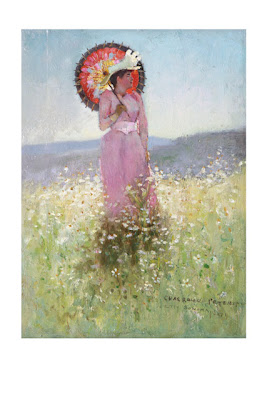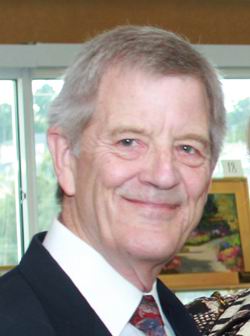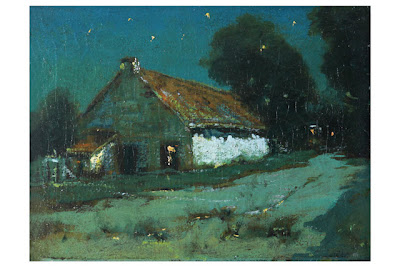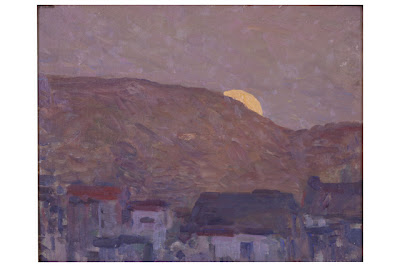Art in the Adobes: Hidden Treasures from Old Monterey
Picture this: late 19th century California. Artists and creative talent overflowing - in fact, some of California's greatest artists - often painting in artist studios repurposed from old Adobe buildings.
It was an explosion of art, spectacularly influenced by the colors and environment of California.
Now, you can explore these artistic treasures, in the first Art in the Adobes, running from September 30 - October 2, 2011. Art in the Adobes is curated by Julianne Burton-Carvajal, professor emeritus of Latin-American Studies at the University of California, Santa Cruz and an expert on California art history.
Long Lost WPA Painting to be Shown at Art In The Adobes in Monterey -
found rolled up in a Sacramento warehouse, now painstakingly restored. Art in the Adobes Festival Weekend, September 13 - 16, 2012

Kitty Sonoma, Charles Rollo Peters (1862-1928), oil on canvas, City of Monterey Collection
Art in the Adobes is organized by Old Monterey Foundation with partners the City of Monterey, California State Parks, the Monterey Museum of Art, Monterey History & Art Association and Old Monterey Business Association.
We were lucky enough to catch up with James Bryant, Co-Chair (with Teresa Del Piero and Nancy Selfridge) of Art in the Adobes, to learn more about this important event. Here's what he had to say...

James Bryant, Co-Chair of Art in the Adobes; owner, Carpe Diem Fine Books
WE: Please tell us about Art in the Adobes...
JB: Well, the name of our festival, Art in the Adobes: Hidden Treasures from Old Monterey is a great place to start!
On the weekend of September 30 through October 2, 2011 we’ll welcome visitors to the first-ever event showcasing both the tradition of Monterey’s adobes and our area’s impressive art. This new cultural festival will feature important early California paintings and sculptures in intimate thematic exhibitions, all presented in historically significant buildings in the Old Monterey National Historic Landmark District.
And ‘Hidden Treasures from Old Monterey’ isn’t just a marketing slogan.
As we began to develop plans for the festival last winter, we were floored to discover that the City of Monterey and California State Parks Department both possess extraordinary collections of early California art, most of which has been stored away, hidden from public view, for many decades. In fact, curator Julianne Burton-Carvajal was so amazed at the riches in the collections she realized that there was way too much to reveal in one exhibit, so we have already created plans for the next several years of Art in the Adobes!
As to the big weekend itself, a special Opening Reception will launch Art in the Adobes Friday evening, September 30. The reception will give sponsors, as well as holders of the All-Access weekend pass, a chance to preview the exhibits at the Cooper-Molera Adobe (a National Trust Historic Site) before the exhibition opens to the public. Attendees will enjoy music, hors d'oeuvres, wine, and soft drinks in the lovely historic gardens.
Then, on Saturday and Sunday, October 1 – 2, ticket-holders will choose their own itinerary as they stroll through a four-block area of the Historic District. They will also have the opportunity to attend lectures where experts will speak on various aspects of Monterey’s artistic heritage.
Family-oriented activities are planned for both Saturday and Sunday.
http://artintheadobes.org/ has everything you need to know about the first Art in the Adobes Festival – artists, venues, lectures, schedule, a map to get you around, specially priced accommodations, and, of course, tickets can be purchased here (early purchase discounts available until September 15).

Merienda, M. (Mary) DeNeale Morgan (1868-1948), oil on canvas, City of Monterey Collection

Dark Barn or Barn at Night, Charles Rollo Peters (1862-1928), oil on canvas, City of Monterey Charles Rollo Peters III Collection
WE: What was the genesis of Art in the Adobes?
JB: Everybody who comes to the Monterey Peninsula first falls in love with the natural beauty of the area and then soon discovers the charm of the historic adobes and their romantic gardens sprinkled throughout Monterey’s downtown area.
Over the years most of Monterey’s adobes have been acquired by the State of California and now form Monterey State Historic Park. The State’s well-publicized budget woes have left few funds available to keep these treasures open to the public and in recent years a common lament of visitors has been ‘Why are all the adobes closed?’
So last fall several members of Old Monterey Business Association (OMBA) got together to figure out how to make the adobes more accessible, and in the process, found out about the ‘out of sight, out of mind’ art!
Historic Adobes. Early California Art. Hmmm.
Putting the two together seemed a natural, and ‘Art in the Adobes’ was born!

Twilight (or Ideal Landscape), William Keith (1838-1911), oil on canvas, City of Monterey de Haven/Jacks Collection
WE: What are Adobes - and what is their historical context?
JB: ‘Adobe’ is basically sun-dried earth. For thousands of years it has been used as a building material in hot climates around the world because it insulates well, it lasts for a long time, it’s cheap and it’s easy to make.
Native Americans in the Southwest used adobe, and then the Spanish taught them to use it in brick form. Adobe buildings are usually small, with only a few windows and very thick (often three feet) walls.
Most of Monterey’s adobes date from the period 1822-1846.
Adobes that are venues for this year’s Festival are Casa Serrano, Cooper-Molera Adobe, Larkin House, and Robert Louis Stevenson House - each with a charming garden and all within easy walking distance of each other. Other historic buildings that are part of the event are Colton Hall, where California’s Constitutional Convention was held in 1849, Few Memorial Hall (where Monterey City Council meetings are held), and the Monterey Museum of Art.

Vieux Port, St. Tropez, Euphemia Charlton Fortune (1885-1969), oil on canvas, City of Monterey de Haven/Jacks Collection

Cypresses, Trees and Ocean, M. (Mary) DeNeale Morgan (1868-1948), oil on canvas, City of Monterey Collection
WE: Why was this period so important for artistic development?
JB: Artists were drawn here first of all by the spectacular scenery, starting around 1875.
Once they got here, they were drawn to the vestiges of the Spanish heritage – it was the capital of Spanish California. The adobes exemplified that heritage. Artists saw them as romantic survivors of a simpler, pre-industrial time, one more in harmony with nature. They found that life on the Peninsula offered sanctuary from the noise and chaos of the cities.
Then the 1906 San Francisco earthquake and fire forced “bohemians” to find a new home, and that brought a great new influx of talent to the Peninsula. In the spring of 1907, a gallery opened in the Hotel Del Monte devoted solely to the work of California artists, especially local ones.
Meanwhile many of the adobes began to fall into disrepair or were in danger of being lost to modernization. Artists began to purchase them to use as studios, often cutting large windows into the north-facing wall. By the 1930’s, artists were leading the historic preservation movement in the area.
So you can see the long relationship between the artists and the historic adobes here in Monterey.

Old Custom House with Horseman, nocturne by Ferdinand Burgdorff (1881-1975), oil on canvas, City of Monterey Collection
WE: How can travelers get the most out of the Festival?
JB: Come to Monterey - see the art, feel the historic atmosphere, hear the lectures… absorb!
But, keeping in mind that you are educators, I must say THE required reading for Art in the Adobes is ‘Artists at Continent’s End: The Monterey Peninsula Art Colony, 1875-1907’ by Scott Shields, Associate Director and Chief Curator at Sacramento’s Crocker Art Museum (Scott will present a lecture on Saturday morning entitled ‘When Monterey was Modern: The Peninsula’s Early Art Colony and its Place in California Art’ – so bring your copy of ‘Artists at Continent’s End’ for Scott to sign!).

Rolling Hills with Oaks, Charles Rollo Peters (1862-1928), oil on canvas, City of Monterey Collection
WE: Who is taking part in Art in the Adobes?
JB: One of the most exciting things (you can tell there are many) about Art in the Adobes is the enthusiasm exhibited by everyone who has heard about it.
Almost as soon as the words ‘Art in the Adobes’ were first spoken a committee of volunteers began to come together to plan the event. The committee is composed of art and history lovers from throughout the Monterey Peninsula and members and employees of Old Monterey Business Association and partners the City of Monterey, CA State Parks, Monterey Museum of Art and Monterey History & Art Association. We’re all committed to making Art in the Adobes an annual tradition in Monterey.

Tiburon, Gottardo Piazzoni (1872-1945), oil on canvas board, City of Monterey Collection

The Dancers, Arthur Frank Mathews (1869-1945), oil on board, City of
Monterey deHaven/Jacks Collection
WE: Is there anything else you'd like to share with us?
JB: Art in the Adobes will be much more than an art exhibit, it will be a community-wide festival.
During the weekend this first year the Monterey County Youth Museum (MY Museum) will hold art-related story hours, Monterey Youth Art Collective (YAC) will stage an exhibit and ‘Art Walk on Fisherman’s Wharf’ will showcase local artists. On Sunday tickets for families, locals, military, seniors and students will be discounted.
Don’t miss the first Art in the Adobes!
WE: Thanks so very much, James - what an extraordinary event!
All photos courtesy and copyright as noted


















